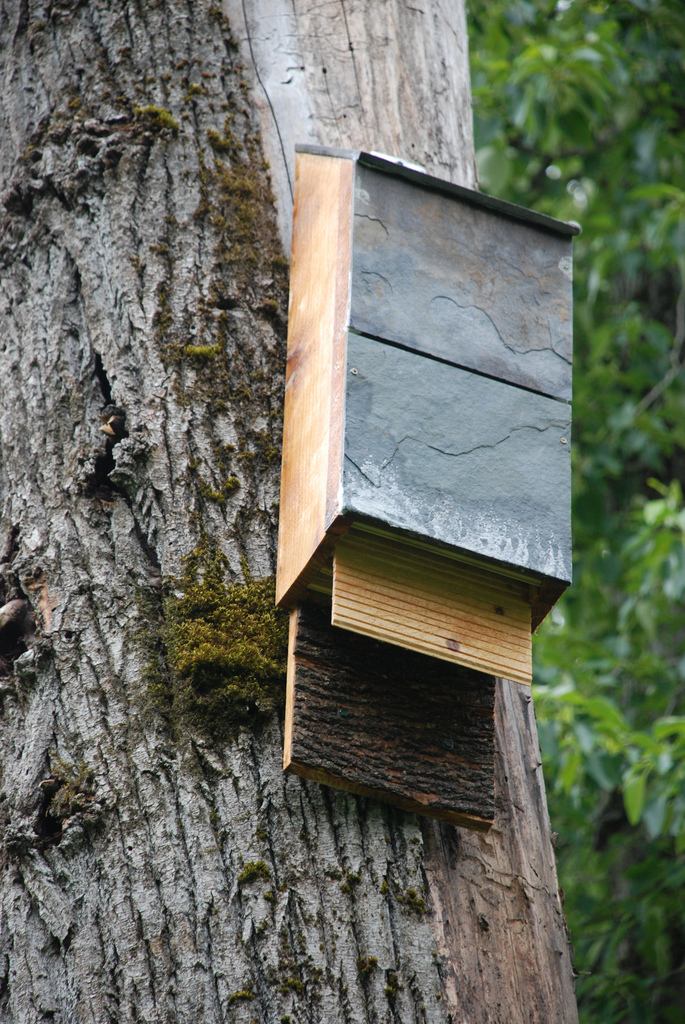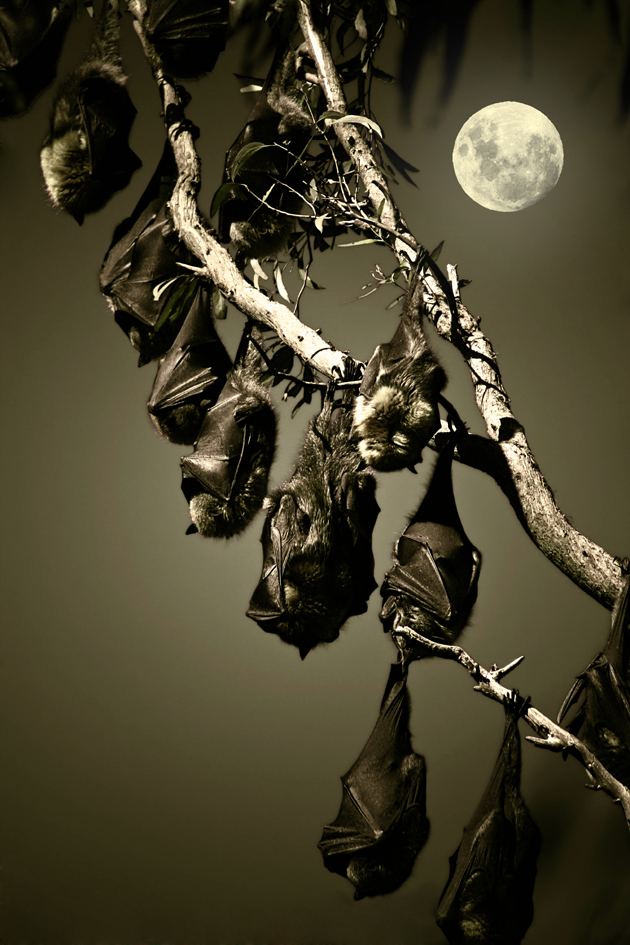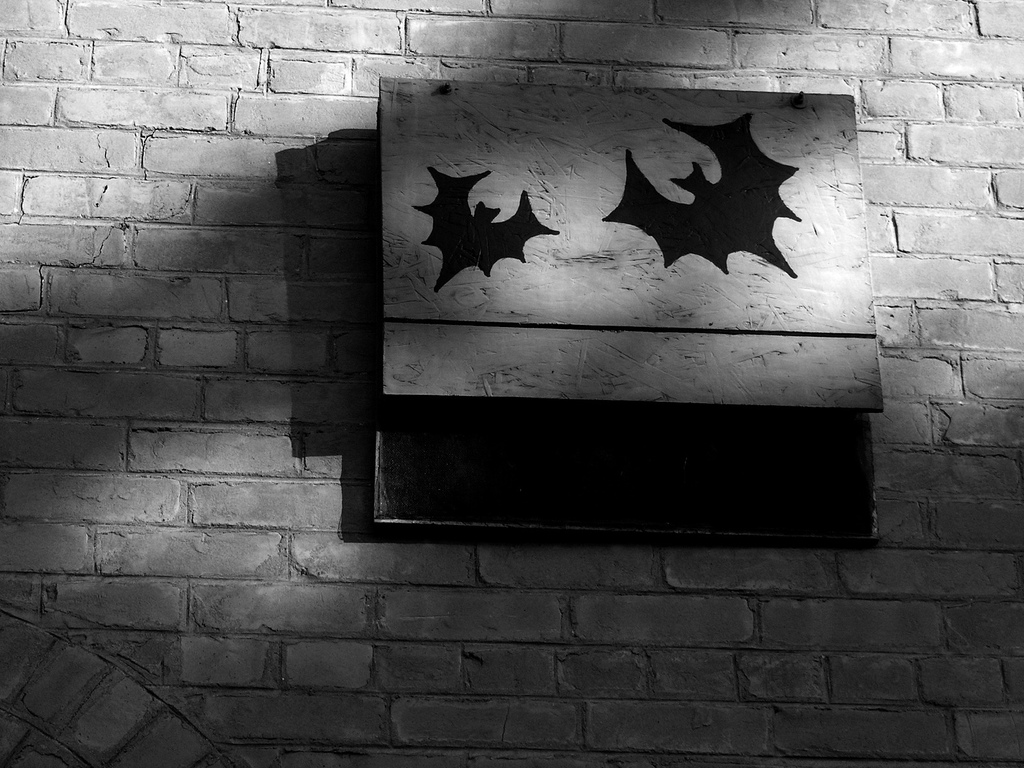Natural Pest Control: Benefits of Bat Houses
This summer, control backyard pests the natural way, by attracting bats.
 the bats fly over austin by Mitch Clendening CC BY-NC-SA 2.0
the bats fly over austin by Mitch Clendening CC BY-NC-SA 2.0

In recent years, many urban areas across North America have undertaken costly and damaging insecticide spray programs to reduce exploding mosquito populations in an effort to mitigate the risks of West Nile Virus. As well, homeowners spend hundreds of dollars for propane-powered mosquito traps so they can enjoy their backyards without being driven to distraction by mosquitoes
Bats will do the job for free
Bats will reduce mosquito populations for free and without using harmful insecticides. However, they need a safe and suitable nesting location to call home. Bat houses provide an alternative space to keep bats from nesting in the eaves or attic of your house but still will attract these beneficial mosquito-eaters to your yard where you want them. Here's why.
-
A single bat can capture 500–1,000 mosquitoes in an hour.
-
In many ecosystems, bats are a key pollinator.
Bats are everywhere

Bats are the only mammal that can fly, and there are more than 1,000 species of bats in the world. They mate in the late summer or fall, and the pups are born in following summer. Bats use echolocation to find their way in the dark, which is what causes a bat to suddenly veer away if you move into its flight path.
Bats mostly winter in caves but in summer when they raise their young they live in trees, under bridges, and in buildings. Large urban areas make it extremely difficult for bats: that's why you may end up with a colony of them nesting in the eaves of your house or other structures. The largest urban bat colony in North America, 1.5 million at the summer peak, lives under the Congress Bridge in Austin, Texas.
Some bat species, like the brown bat, are also suffering huge population reductions due to a fungal disease commonly referred to as "white-nose syndrome." Millions of bats have succumbed to this disease, threatening several species with extinction.
Aren't bats a health risk?
Several common misconceptions about bats make people leery of them:
-
Bats are NOT prone to rabies,
-
Bat droppings (guano) are NOT a source of tuberculosis in humans,
-
Bats are NOT aggressive and do NOT "attack" people,
-
Bats are NOT "dirty" and ridden with lice.
Current scientific studies indicate that none of these misconceptions are proven to be true.
Buy or build a bat house

Like bird houses, bat houses have a specific design that works for their needs. A bat house should be:
-
located at least 15' above the ground;
-
warm (in full sun is best) and dark;
-
a tight space that mimics the bark on a tree;
-
rough inside, so the bats can cling to the interior; and
-
close to a water source.
Bat houses that are poorly designed, constructed, or located will not make a suitable nesting place for bats and won't attract them. Whether you're building or buying a bat house, be sure to look for the most recent designs and guidelines for the best chance of success. (Bat Conservation International is a resource we recommend.)
As more wild habitat gets developed by humans, bats and other wild creatures lose their natural nesting places. Bats play a vital role in natural pest control by reducing the mosquito populations, so it's in our best interests to protect them and encourage them to nest in our yards and gardens by installing bat houses.

Rick Atkinson
Rick Atkinson works from (and on) his century-old farmhouse in New Brunswick, Canada. His professional and freelance career has ranged widely, contributing to an unusual mix of experience: as musician, retail manager, video producer/editor, CAD designer, woodworker, DIYer, beekeeper. He keeps a close eye on global events, particularly energy and climate change, new technologies, and long-term social and economic trends. Currently, Rick freelances in Kitchen & Bath cabinet design and CAD drawings for a custom cabinet shop. After hours, he creates original woodworking projects and plans, and writes about home improvement and design on his blog,StonehavenLife.com.

